-
Posts
29278 -
Joined
-
Days Won
38
Content Type
Profiles
Forums
Gallery
Events
Posts posted by Steph
-
-
-
Without a lot of reasons to back up my opinion, when I see those white filaments plus clear space, I think Vitro.
Not a trick question: do any of Rick's dug pelts have the filaments and clear which would suggest Vitro to you if you saw them in a marble which wasn't already obviously pelt?
edit: trying to "get" what seems Vitro at times like this. There are other maybe similar examples which seem to get a split Vitro/Pelt vote and I don't usually see the Vitro side. Yet the Superiors were once thought to most likely be Pelt, if I recall the story correctly.
-
What is my conclusion...well, let's see...since you put it that way...I guess I haven't come to a conclusion after all...
What do you think it is?
What do I think? I think I can see why someone would be tempted to call it a citrus. And I guess I can see why others would object. I personally wouldn't try to tweak the boundaries on a citrus i.d. The laws differ from state to state but usually there are stiff penalties for tweaking without a license.
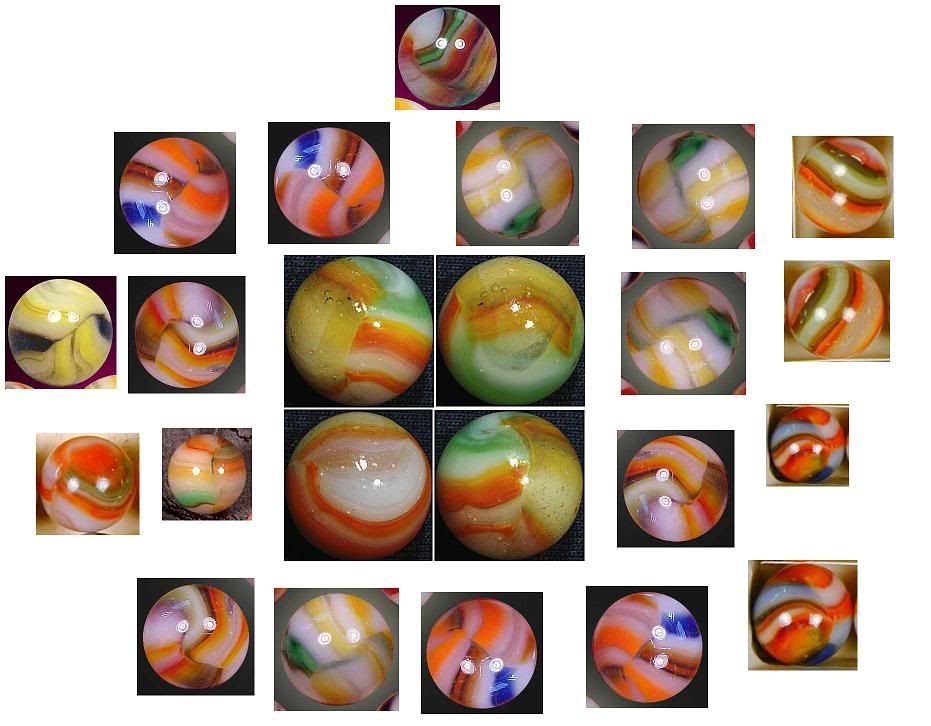
(Comparison mibs are Steve's, Charles' and Craig's)
On the other hand, I thought you'd have a much easier time getting a citrus confirmation on your 2nd one.
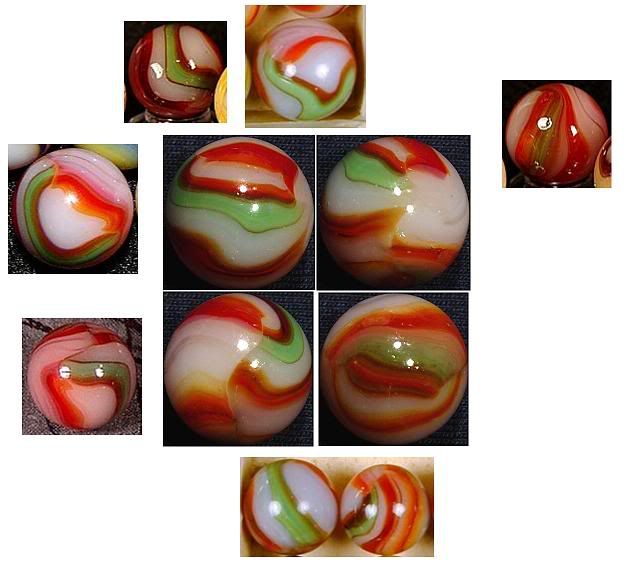
(comparison mibs are Charles' and Craig's)
-
Well then, I guess that pretty much settles it.
What threw me was all the little dimples in the glass, just like Pelts, and the bubbles, just like Pelts, plus the colors look similar to another Citrus I have (that really is a Citrus...I think).
Thanks, everyone

What is your conclusion?
Sounds like you've decided not pelt in spite of all the pelt-like signs. ??
-
This brushed patch is the style which is known as Wales. (Pics below are from various posts and auctions. Some are clickable to enlarge.)
(Paula)
The name comes from this particular distributor's name:
(Al)
It should be noted that Wales sold other types:
And other companies sold what we call the Wale's type.
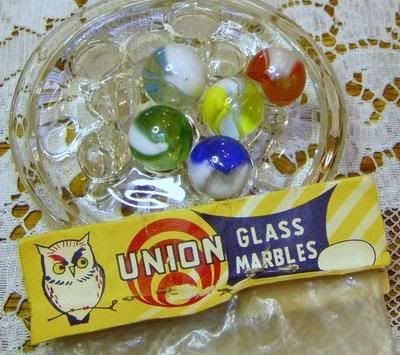
(Bo)
The small, usually single colored types are known by other names such as "Japanese pincher", "Japanese pincer", and "Mt. Fuji Peewee". They're in the "game marble" category:
(Don)
And for fun, here's a pretty one which was put up for i.d. The consensus opinion was Wales type.
(Cairlinne)
-
Here's an Akro Pat dug. (I finally remembered where I'd put this one.)
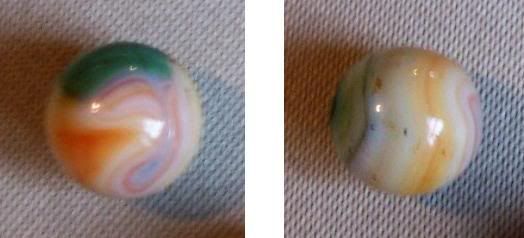
-
Thanks! I love the Akros!
Here's one Susan posted. I believe the consensus opinion was Vacor on this.
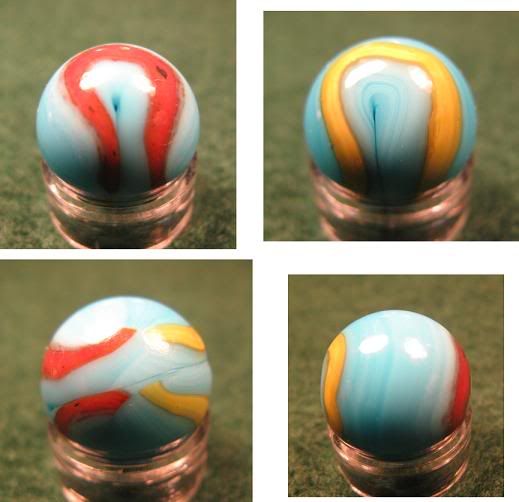
That is the one which I think might give insight into how Vacors sometimes manage to resemble NLRs -- complete with seams -- but then when you look a little closer, something seems not quite right. Maybe some ribbons are actually hitting seams, but other ribbons which look like they're connecting turn back too soon. Sorta like on this one posted a while back:

Cool, I just noticed that Randy's has a real/false seam thing going on too. I'll have to remember this one for that Vacor study I want to do "someday".

-
Then what?
Please edify.
-
My guess on that one would have been Jabo.
I'm looking for more buttcracks!
CAC? Pelt? some colorful Akros? I've seen 'em. But I can never find 'em when I want them!
-
A beautiful marble not often seen. Patry's Christensen Orange Peel:
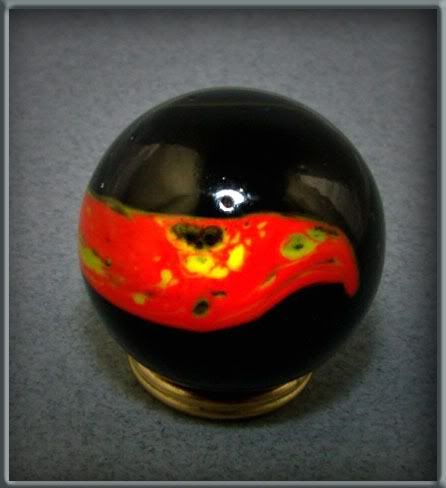
-
Peerlesses are mostly known for their unusual patch shapes. But I think some can be more normal looking. How can one be sure though? How does one get a positive peerless i.d. for a neatly shaped patch? Well, it was the peerlesses which were used for the picture marbles, and for few others like the Cotes Master Loaf advertising marble at the beginning of this post. So I thought it could be fun and useful to collect a photo bank of picture marbles to show a range of possibilities.
Feel free to add other peerless pix or info, picture marbles or otherwise. The ones I post are most likely from auctions. There may be some exceptions. Some identifiers can be found in the pic names. Some pix may be clickable for larger images.
-
LOL
It felt good just to get the questions off my chest.
I think I was prepared for an idea like this:
When Mid-Atlantic sold their machines,there were about 8-10 machines,where each exact one came from ? But most were all making the same similiar marble,pattern,striping,etc. I guess that what i am trying to explain is that,it is very difficult (if possible) to track a certian marble or pattern to one machine,in most cases with the WV machines.Sorta needed to feel like the bases were covered before I jumped to that though.
If not said carefully it's very close to "they all look alike", which wouldn't be true of course.
-
Some background from American Machine-Made Marbles:
Champion started making marbles in Pennsboro, Ritchie County, VA sometime around 1940.
Bill Heaton founded the Heaton Agate Co. in Cairo, WV in 1946. The Bogards bought Heaton Agate and all their equipment in 1971. Jack Bogard said in an interview that they also bought one of Ravenswood's machines. He said Champion got another. And then a couple of decades later Jack's new company Jabo got Dave McCullough from Champion!
AMMM says that the later Ritchie County marble companies, a group which includes Heaton Agate, used machines which were "copied or closely replicated" from Champion designs. On the other hand Bill Heaton is credited with designs of his own, which Dave McCullough used to build a machine while he was at Champion. This machine was used in the 1980's to produce the "Whirlwind" and many of the New Old Fashioneds.
So much interrelation!
- Question 1: Did either Bogard or Champion use Ravenwood's machines?
Jabo bought Bogard's equipment in 1987, and bought Vitro in 1992. AMMM says that Heaton's marbles ranged from 3/8" to about 1". However, AMMM also said that while Jabo was contemplating the Vitro purchase, Dave McCullough was 'particularly interested in the 1", 3/4", and the pee wee marble machines that Vitro owned'.
- Question 2: Which sizes of machines did Jabo get from Vitro? From Bogard? . . . . (Late note: I now see that the Bogards traded Heaton's 3/8" machine to Marble King.)
Many 5/8" Jabo Classics look like Anacortes Vitro marbles. Also, the swirl patterns on Jabo's 1-inchers can look parrot-y. However, the first Classics (Figure 1) were made in 1991, so they were made with a Bogard machine. It seems most likely that the Fall 1992 Classics run would also have been done with Bogard equipment. But which Bogard equipment? Many Ravenswoods look like they could be mistaken for Jabos. It makes one wonder.
- Question 3: Were the first Jabo Classics of Heaton heritage or Ravenswood?
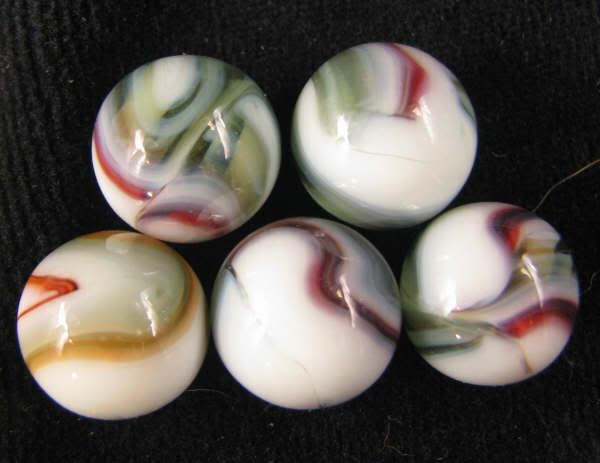
Figure 1. Photo by Steve Sturtz.
- Question 4: Which company's machines were used for which size of Jabo classic? 5/8", 3/4", 1", and peewees. Most or all of this is covered in the above. One thing I want to pin down is whether Jabo used both Vitro and Bogard machines for the 5/8" runs. And if so, it would be cool to have some idea of the proportion.
After thought: I suppose there are other possibilities. Perhaps the machines are combined and/or modified. Or even replaced with new equipment.
- Question 5: What happened to Bogard/Heaton's cat eye machine(s)?
- Question 1: Did either Bogard or Champion use Ravenwood's machines?
-
I don't know where to put this, but it was cool:
The question was why Ohio and West Virginia had so many marble factories. The answer involved access to silica sand and natural gas. That led to a discussion about silica sand in general, including the high quality sand Peltier used.
1865 Great Lakes Shipwreck Marbles
Someone disputed the date of the marbles in the original post. Still interesting material.
-
Very nice presentation.
How wonderful that you could be part of Jabo's history.
-
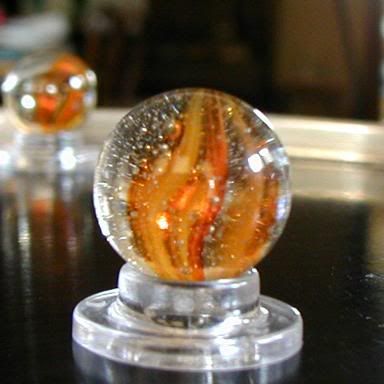
The light orange is actually yellow. 4 vanes. Each vane is half yellow and half orange. The orange is transparent.
-
So that's nice. There seems to be no objection to calling the little red one a realer. Noticing that the base on the one I'm looking at wasn't absolutely crystal clear made me feel better about that possibility. I imagine it would photograph even less like clear glass and would look even more "right" then.
The feathering inside is really cool.
Cute mibs, Kevin. I'm curious about the brown and yellow one. I wouldn't have guessed Pelt but I don't know who made it.
-
Yes, that's the kind. The red I'm holding looks like a littermate to the red at the top left of your pix.
The green base wouldn't be called a realer from what I understand.
-
Darla, the 17/32" one is yours. zig zaggy red patch. Did you happen to take a pic of it?
-
What are your smallest peerless patches and acme realers?
Did they do anything weird in the smaller sizes?
I'm looking at a couple of little mibs with very snaky patches. One is a little under 17/32". The other is a little less than 9/16". The bases look tantalizingly like realer bases, butttttt they have a lot of clear. (edit: not crystal clear -- ever so slightly cloudy)
Where there is white it has a grain. The white in the smaller one only takes up about half of the base but it has a very feathery, pelty look.
The white looks practically transparent when backlit, and has an orange glow.
So, I want to call them realers, except that they have so much clear.
Sorry for no pic. My camera is still out of commission.
-
Felicia hasn't had a lot of time to read the board. She may not have seen this one. Or maybe she wouldn't open a thread with "buttcracks" in the title. ;-)
-
An assortment of repro boxes.
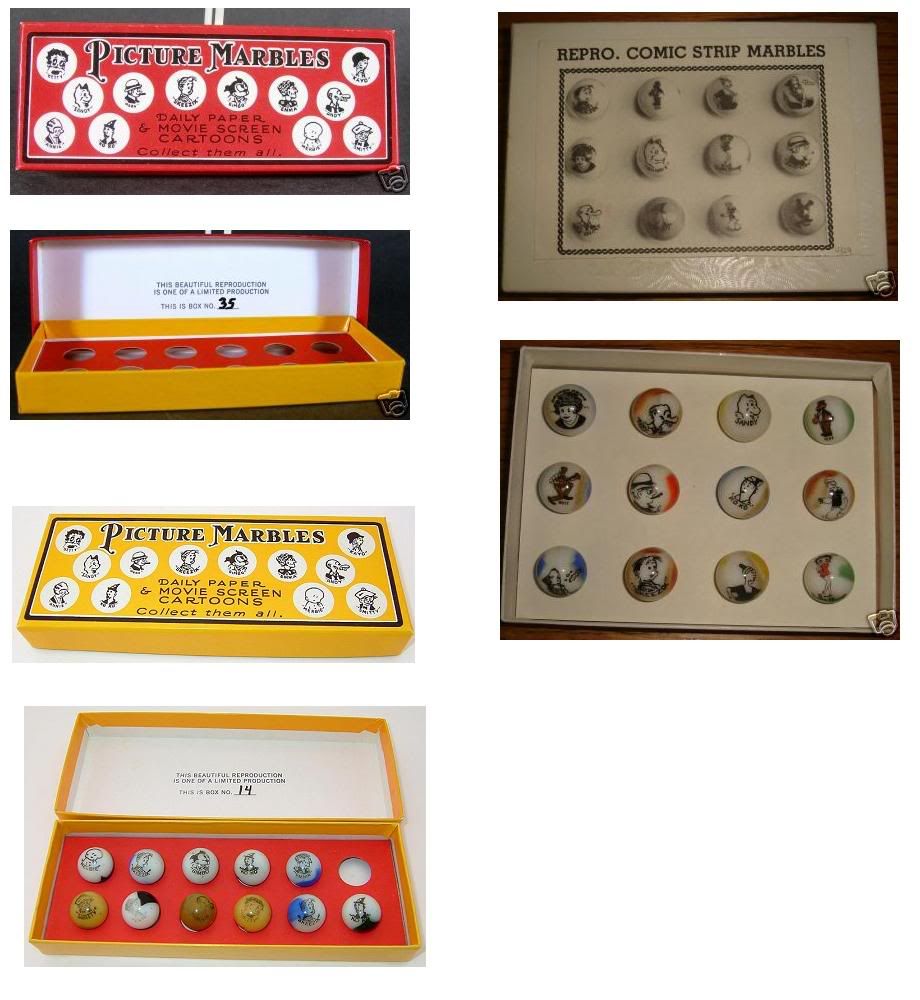
-
Hey Brian, what happened to your buttcracks?! I'm getting the dreaded red X.
Those were good examples.
Here's one from Alan's old Marble King page:
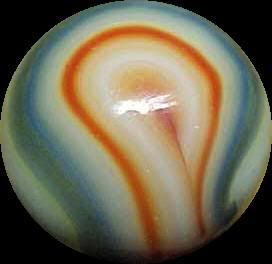
-
A couple of jack o'lanterns
Tom Thornburgh:

Jabo:
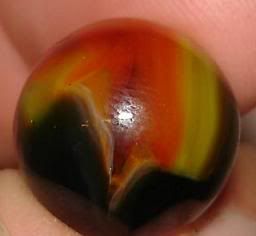



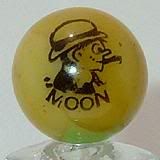
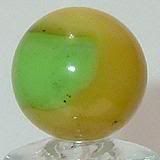
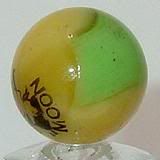
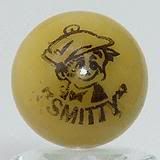
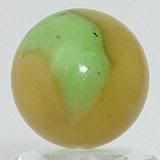
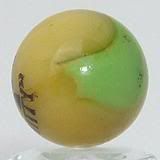




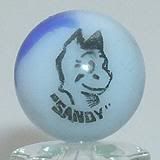
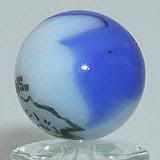
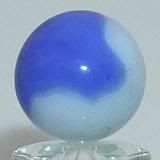
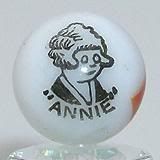
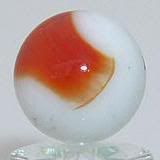
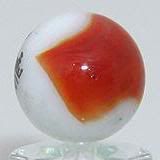
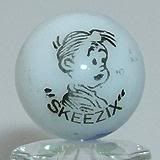
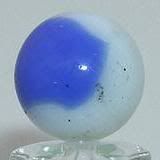
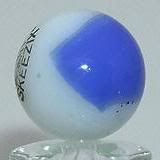
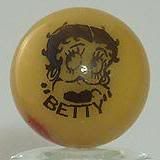
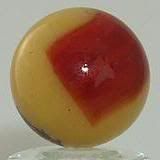
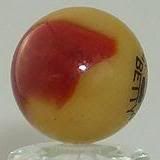
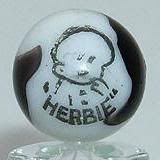
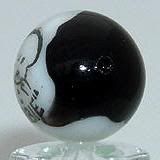
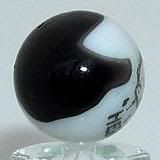
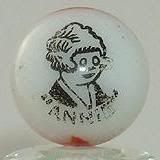
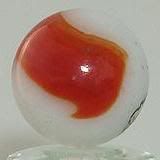
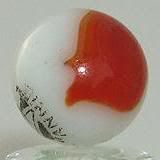
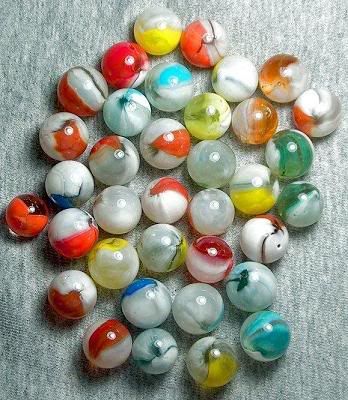
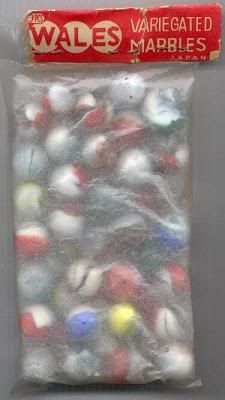
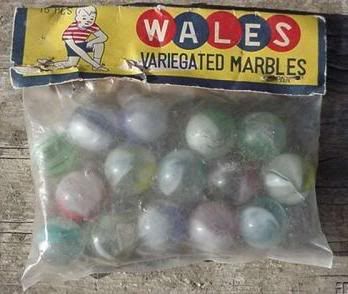
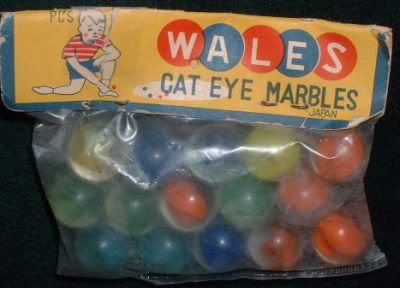
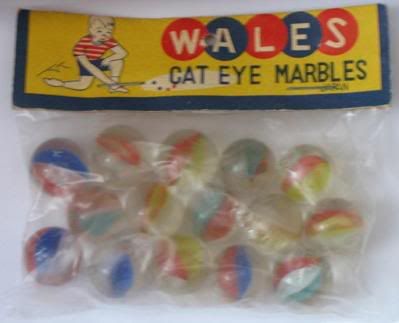
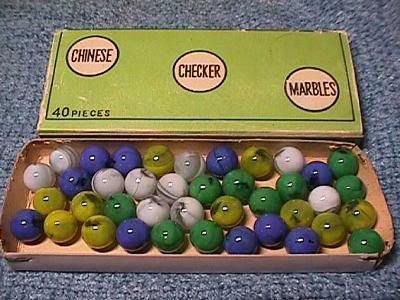
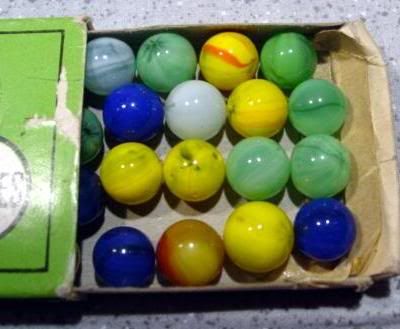
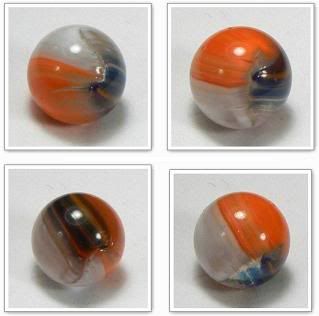





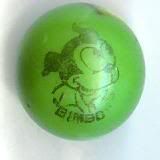
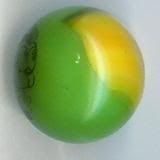
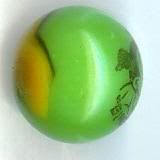
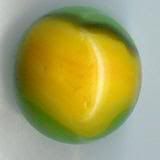




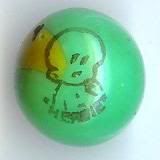
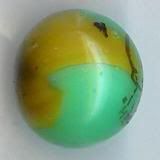
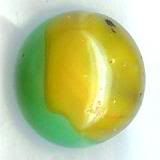
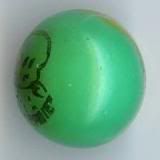












Links: Marbles From Outside The U. S.
in Steph's Study Hall
Posted
I think this might be about playing marbles in Spain
From Burgos, Juegos Populares, by Fray Valentín de la Cruz, 1993:
(source)
AltaVista Babel Fish Translation: